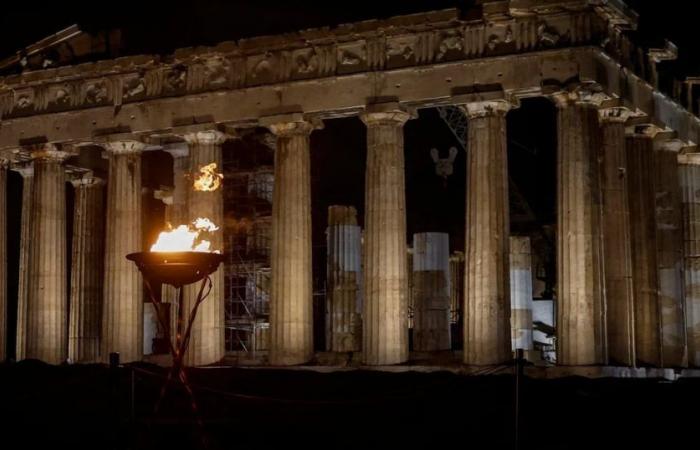The Acropolis of Athens, the rocky hill in the Greek capital that is home to the iconic Parthenon temple, continues to reveal new archaeological data. A recent study published in the American Journal of Archeology describes the discovery of a lost temple on the current site of the Parthenon. This important discovery, made by Merle Langdon of the University of Tennessee and Janric van Rookhuijzen, began with the discovery of a old graffiti.
He graffiti was found on a marble rock outcrop in Variabout 20 km southeast of Athens. This piece is part of a group of more than 2000 graffiti made by shepherds and goatherds that have been studied by Langdon in recent years. These writings and drawings depict boats, horses and erotic scenes, all dating back to the 6th century BC. The specific graffiti that has drawn attention is a rudimentary drawing of a building with columns and steps, identified as a temple.
“The 100 Foot Building… by Mikon”, reads the Greek inscription that winds around the drawing. Although nothing else is known about the author, probably a shepherd named Mikon, the use of an ancient Greek alphabet confirms that the graffiti was done in the 6th century BC. C. The term “Hekatompedon”which in Greek means “100 feet”, is of great importance because it was the old official name of the temple dedicated to the goddess Athena, now known as Parthenon.
The relevance of the discovery lies in the fact that The graffiti depicts a temple that could be older than the Parthenon, built around 450 BC This opens the possibility that previous temples existed on the Acropolisa belief held by archaeology, although the dates and specific aspects have been the subject of debate. “It is likely that some of the temple sculptures found in the museum belong to this lost temple,” Langdon points out.
A historical calamity further complicates the understanding of these ancient temples: in the 480 BC C., during the Greco-Persian wars, a Persian army arrived in Athens and destroyed all the buildings on the Acropolis. In the Acropolis Museum in Athens there are large broken sculptures that once decorated these temples, possibly damaged in the Persian attack of 480 BC. If this Hekatompedon temple mentioned by Mikon existed, it may have been one of the temples that suffered during that time. stroke.
Another piece of the puzzle is a democratic decree from Ancient Greece, predating the Persian destruction and construction of the Parthenon, which mentions a Hekatompedon on the Acropolis used to store treasure. “This decree suggests that Greek temples also functioned as storehouses of treasures offered to the gods,” the researchers highlight. This reinforces the idea that the term Hekatompedon in the decree could refer to a temple, and not to an open courtyard, as some archaeologists have suggested.
The importance of graffiti also extends to the realm of literacy in Ancient Greece. “Contrary to what is normally thought, the shepherds knew how to read and write,” says van Rookhuijzen. This data challenges the common conception that literacy in the Greek world was restricted to the upper, urban classes. The shepherds, apparently, made this graffiti perhaps as a form of escape during work hours.
The graffiti discovered by Merle Langdon in Vari not only reveals the possible existence of a temple before the Parthenon, but also provides valuable insight into the literacy and cultural practices of shepherds in the 6th century BC “A small doodle can be the key to solving historical enigmas,” concludes the researchers’ analysis.


